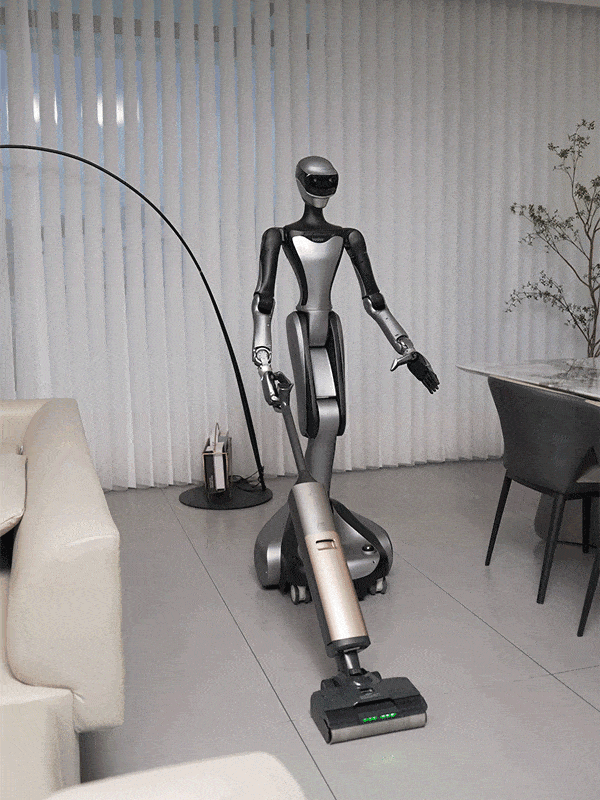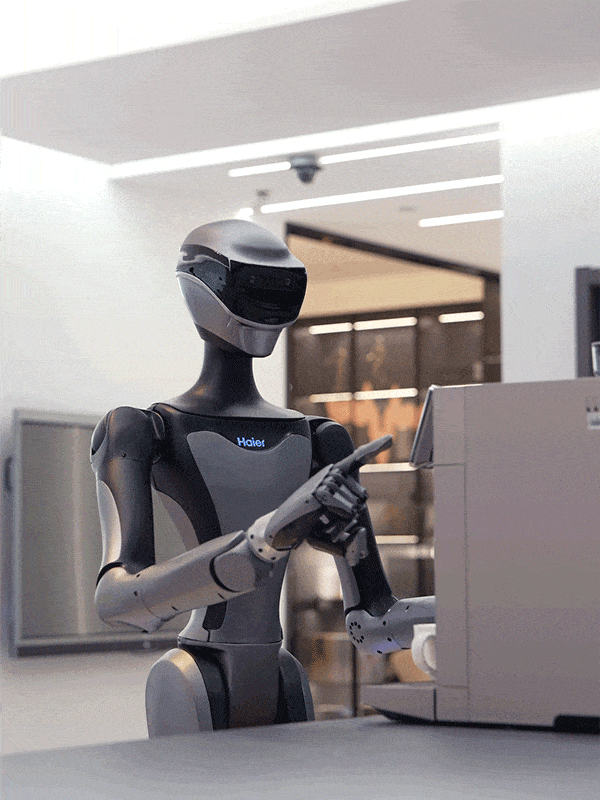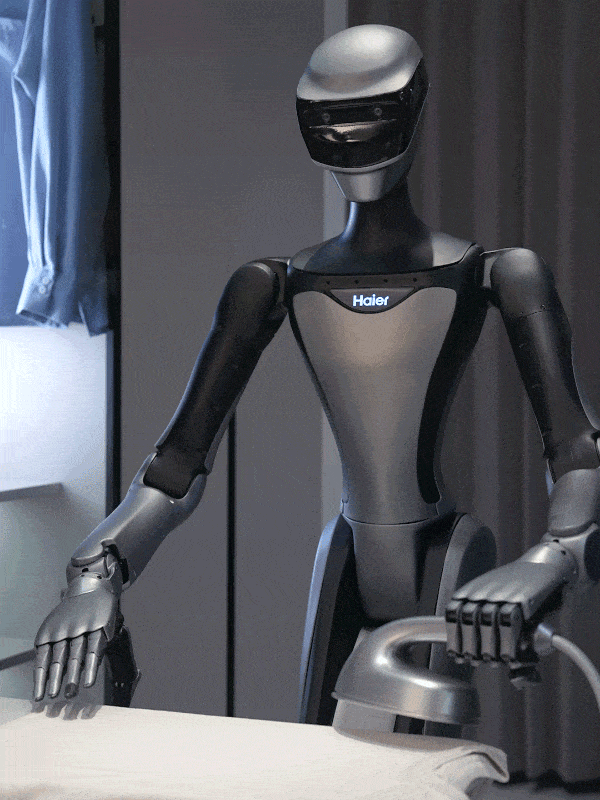The Chinese tech giant Haier has officially introduced HIVA 海娃, its new humanoid robot designed for domestic use. Standing at 165 cm tall, weighing 70 kg, and featuring 44 degrees of freedom, this robotic assistant was conceived as a “nanny robot” for household chores, promising to be the “end of domestic tasks,” according to the company.
Still in the Learning Phase
HIVA moves around using a mobile base and is equipped with articulated arms that theoretically allow it to manipulate household objects. Promotional images and videos show the robot using a mop, cooking, or cooperating with smart appliances like washing machines and irons to wash, hang, fold, and store clothes.
However, Haier has acknowledged that many of these tasks are not yet performed autonomously, but are controlled remotely by engineers. The company explains this as part of reinforcement training and data collection for future models with greater autonomy.

Synergies with Connected Home Intelligence
HIVA is the result of collaboration between Haier Brother Robot Technology (a subsidiary of Haier) and the emerging company Beijing Stardust Epoch Technology. The partnership was signed last March with the goal of developing service robots based on real scenarios in smart homes.
The robot is part of Haier’s broader strategy in home robotics, which also includes “Xiaoxing,” a biped prototype showcased at AWE 2025. With these initiatives, Haier positions itself in a market where giants like Tesla, Xiaomi, and Unitree are also developing humanoid robots for personal assistance.

Current Limitations and Technological Challenges
Despite the media buzz, HIVA is far from being a ready-for-market product. It still requires direct supervision, its mobility is limited to its rolling base, and handling complex objects is not yet fully autonomous. Nevertheless, it marks a significant milestone for China’s robotics industry, which aims to develop not only industrial robots but also social and domestic ones.

China has become a global leader in the number of companies dedicated to humanoid robots, with over 300 active firms and a rapidly growing ecosystem. According to the new international standard L1-L5 in robotic intelligence, robots like HIVA are still at low autonomy levels (L1-L2), indicating the path forward to achieve genuine domestic utility.
The Future of the Home?
Haier’s vision is clear: a home where routine and repetitive tasks disappear thanks to robotics, allowing people to focus on activities of greater personal or professional value. But to realize this future, huge hurdles remain: true autonomy, continuous learning, safety, reliability, and, importantly, affordability for households.
For now, HIVA is more a symbol of what’s to come than an immediate practical solution. But if advances in AI, computer vision, and robotic control continue at the current pace, it’s not unreasonable to think that within the next decade, this kind of robot could become a common part of everyday household furniture.
via: ithome

